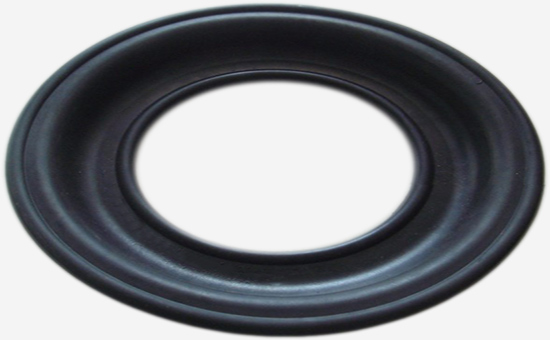
The solubility of common sulfur in rubber increases with the increase of temperature, and becomes supersaturated when the temperature decreases. At this time, excessive sulfur will precipitate out on the surface of the rubber compound to form crystals, which is sulfur injection. Preventing sulfur injection is of great significance to ensure the performance and life of rubber products. In actual production, the solubility of sulfur in different types of rubber is different, and the amount of sulfur required in the production process of different rubber products is also different, and the amount of sulfur needs to be controlled reasonably.
3. The amount of sulfur in rubber products
In actual production, the amount of sulfur in rubber products is determined according to the requirements of 2YLYY712, which is generally controlled 0.3-4 parts. Based on 100 parts of raw rubber, the amount of sulfur in general soft rubber does not exceed 3-3.5 parts, and the amount of sulfur in semi-hard rubber is mostly controlled 20-30 parts. The amount of sulfur in hard rubber can be increased to 30-50 copies.
4. Reasons and hazards of rubber vulcanization
When sulfur is used for vulcanization of rubber products, if the amount of sulfur exceeds its solubility in the rubber, crystals will precipitate on the surface of the rubber; when mixing sulfur is added, the mixing temperature is too high or the mixing is uneven. There is a lot of dissolution. The amount of sulfur at room temperature that exceeds the saturation solubility limit or supersaturation solubility limit at room temperature will also cause sulfur injection problems; improper sulfur or severe sulfur deficiency can also cause rubber products to spray sulfur.
In actual production, the phenomenon of sulfur spraying in unvulcanized rubber will destroy the uniformity of sulfur distribution in the rubber, thereby reducing the adhesion of the rubber surface; rubber product spraying not only affects the appearance of the product, but also leads to the aging resistance of the product decline.
5. Common methods to solve rubber vulcanization
In actual production, in order to prevent the unvulcanized rubber from spraying sulfur, sulfur should be mixed in at the lowest possible temperature, or a suitable amount of reclaimed rubber should be added to the rubber. Before adding sulfur, add some softeners, and use channel carbon black to reduce the probability of sulfur injection. In addition, the combined use of sulfur and selenium can also reduce the phenomenon of sulfur spray. If you want to completely eliminate sulphur spray, it is recommended to use insoluble sulphur instead of ordinary sulphur powder.
When natural rubber, synthetic rubber and reclaimed rubber are vulcanized with sulfur, the rubber product manufacturer must strictly control the amount of sulfur, choose the right time to add sulfur to ensure that the sulfur is evenly dispersed, further improve the physical and mechanical properties of the vulcanized rubber, and effectively avoid sulfur spraying.
Exclusive original article [commercial authorization] reprint, excerpt and excerpt in any form are prohibited without written authorization. Focus on Hongyun rubber: learn the process formula and raw material technology of producing rubber products from recycled rubber to help you reduce costs and increase profits